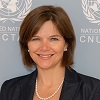Hello Visitor! Log In
Achieving the SDGs through Green, Blue, Orange, Purple Economies and Frugal Innovation: New Economics for Sustainable Development
ARTICLE | June 25, 2021 | BY Chantal Line Carpentier, Wendela Rang
Author(s)
Chantal Line Carpentier
Wendela Rang
Achieving the SDGs by 2030 is still possible,* but it requires bold policies leveraging bold action. Luckily, we have the SDG and Financing for Development (FFD) framework to guide us. The SDGs unanimously agreed by all nations cover the world’s most pressing social, environmental and economic issues. Yet despite unprecedented buy-in by governments and other stakeholders, their implementation has been slow and going in the wrong direction in the case of hunger, inequality, biodiversity, and climate change.
“We cannot waste another crisis. Grounded in solidarity and the realization that our economic, health and political systems are inter-connected, we also need to ensure the trillions in stimulus packages support circular and frugal innovation in the transition to green, blue , orange, and purple economies.”
Achieving the SDGs demands massive public and private investment in renewable energy, sustainable agriculture, and digital infrastructure, paired with policies ensuring equitable access—notably for women and vulnerable groups. It also necessitates replacing the neoliberal economic model with more people-centered, sustainable, and resilient models. Thankfully, 70% of the leading world economies have made strong commitments to carbon neutrality by 2050,† more investors and governments require businesses to disclose their plans to get there, many including nature-based solutions, which could be transformational.
But changing the way we innovate can also be transformational. Building upon existing innovation and technologies to achieve the SDGs turn inequalities, climate change, and pollution, among others, into business opportunities that deliver for people and the planet.‡ The COVID-19 pandemic has demonstrated that in times of scarcity, frugal
innovation—doing “better with less”—delivers high-quality solutions at a fraction of the costs using less resources. Think of diving masks converted to respirators by entrepreneurs! These bottom-up innovations disprove the belief that only a bunch of smart scientists locked in their labs and protected by intellectual property laws can invent new solutions—most often unaffordable for the 100 million low-income people targeted by SDG 2, 3, 4, 6, and 7. Indeed, Open Innovation, where MSMEs and MNCs could share resources and knowledge to co-create solutions for SDGs that benefit entire industries (and populations), might just be better suited to uncover and roll out affordable solutions to face our urgencies.
We cannot waste another crisis. Grounded in solidarity and the realization that our economic, health and political systems are inter-connected, we also need to ensure the trillions in stimulus packages support circular and frugal innovation in the transition to green, blue§, orange, and purple economies. Doing so would avoid costly delay and stranded assets help workers transition to the new economy, and ensure low-cost high-quality solutions to the SDGs are supported.
Similarly, the creative (or orange) economy (CE) offers great opportunities for youth entrepreneurs, relying on human capital and digital technologies to create eco-friendly jobs based on creativity. The creative industries, such as fashion and media companies, also influence positive consumption choices as they are often operated by young people who tend to drive and support sustainability.
Every year, we miss out on 11 trillion USD from the 16.4 billion hours spent on unpaid care work every day—mostly by women¶. Hence, investing in the care economy—education and health provision for children, elderly, and disabled people—not only advances SDG 3 and SDG 4, but creates decent jobs and boosts economies while addressing gender-based inequalities.
Finally, Social and Solidarity Economy (SSE) could be a superior model to address exclusion by incorporating marginalized groups in supply chains and facilitating their vertical integration into the global economy. SSE also fosters community prosperity through shared ownership of assets and means of production, and promotes active citizenship, participatory democracy, bolstering social cohesion and sound governance (SDG 16) and resilience. Being an integral part of communities, SSE organizations have a vested interest to ensure the social and ecological integrity of their host communities.
* https://www.stockholmresilience.org/download/18.51d83659166367a9a16353/1539675518425/Report_Achieving the Sustainable Development Goals_WEB.pdf
† UN News. ‘The race to zero emissions, and why the world needs it’, 2020. https://news.un.org/en/story/2020/12/1078612
‡ N. Radjou and J. Prabhu 2014. What Frugal Innovators Do? HDR https://hbr.org/2014/12/what-frugal-innovators-do.
§ Green economy concept adapted to our oceans – that could benefit island States and countries with long coastal areas.
¶ UN Women, 2020. ‘Whose Time To Care? Unpaid care and domestic work during COVID-19’ https://data.unwomen.org/publications/whose-time-careunpaid-care-and-domestic-work-during-covid-19



